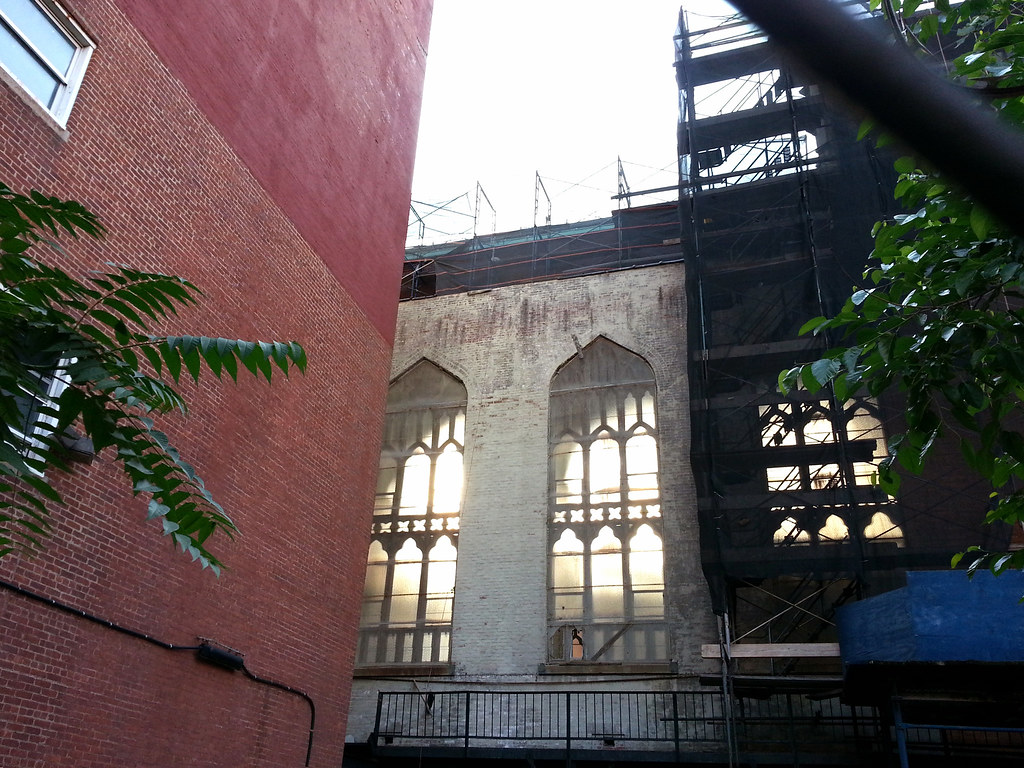
shines through the vacant interior of St. Thomas the Apostle. This shuttered church, with its "wildly ornate" facade now hidden behind scaffolding, has been called "one of the most original buildings in the city"; the AIA Guide to New York City describes its style as "berserk eclecticism . . . unnameable but wonderful". You can see photos of the structure in happier days here.
After closing St. Thomas in 2003, the Archdiocese of New York decided to knock down the church and replace it with affordable housing for the elderly, and actually began dismantling parts of the facade. Stunned by the idea of losing this architectural gem, former parishioners filed a lawsuit to halt the demolition and politicians stepped in to try to get the building landmarked. Neither effort was ultimately successful, but the archdiocese opted to hold off on its plans anyway.
While the exterior of the structure is still largely intact, the stained-glass windows (made by Mayer of Munich), altars, and other religious items have been removed and shipped off to other parishes. Many of the windows (which you can see here) ended up at Blessed Kateri Tekakwitha, a new church in Dutchess County, while others made their way to St. Brigid's in the East Village, which itself had been closed and briefly set upon by demolition crews before an anonymous donor stepped in with an offer of $20 million to restore and reopen the church.
The archdiocese finally gave up on the senior housing plan last year and sold the property to a developer who says he can save half of the church, including the facade, and wants to convert it into some kind of community space, although the rear portion of the building will still have to be torn down. This is all far from certain, of course, but it offers the preservationists a reason for measured optimism after so many years of disappointment.
I'm walking every street in New York City.
This is the counterpoint to my walk across the US. Instead of seeing a million places for just a minute each, I'm going to spend a million minutes exploring just one place. By the time I finish walking every block of every street in all five boroughs, I'll have traveled more than 8,000 miles on foot — all within a single city. Details!
Email me at matt@imjustwalkin.com
Subscribe to my email list
Maps: Progress | Photos
Your donations allow me to keep walking full-time. If you think what I'm doing is valuable and you'd like to offer some support, I would be very grateful. On the other hand, if you think I'm a worthless bum, feel free to email me and tell me to get a job, bozo. Both are excellent options!



And the ailanthus tree in the corner of the photo is also known as the “tree of heaven”….although why is a mystery. I understand it smells awful!